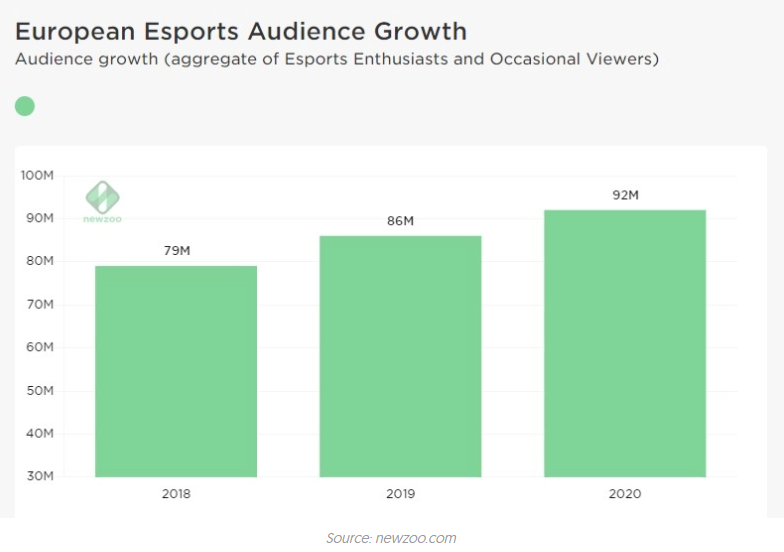Tech trends for 2021:
The ones to watch
2020 has accelerated the growth of many technologies. From enabling us to work remotely, to allowing a virtual diagnosis, the pandemic has been a key factor in the exponential growth of some technologies. This year has been a big year for the digitisation of many sectors. As events have been postponed, virtual equivalents have taken their place. And, as we are becoming increasingly reliant on technology, the need for tighter security is more important than ever. Here are some technologies that have boomed this year, and look set to become tech trends for 2021.

Mark Baggs
Head of Global Expansion
Digital healthcare
As the fight against COVID-19 goes on, the healthcare sector is set for continued growth.
With the increased need for medical equipment including diagnostics and pharmaceuticals, the industry is requiring more equipment and staff members as the pandemic continues. As a result, governments look to continue to invest in the healthcare industry. Specifically, making investments in technology which enables virtual diagnosing, especially for minor and routine appointments.
The number of virtual visits has boomed during the pandemic and it has been predicted by Forrester analytics to hit one billion in the US by the end of 2020. It’s also thought during 2021, one third of virtual care appointments will be related to mental health issues. Forbes has listed on-demand doctor apps as one of the biggest healthcare tech trends for 2021.
Along with helping to reduce the risk of spreading the virus, remote medicine and diagnosing enables an increase in patient consultations which can be particularly beneficial in highly populated countries like China and India where there is a need for more healthcare professionals. It is predicted that even after the pandemic, these digital technologies will be here to stay. Apps like Telehealth could become common place after the pandemic.
In 2021, we’re expecting to see the ongoing development of robotic and autonomous healthcare assistants for hospitals and nursing homes. These are being trialled in the UK to help with symptoms of loneliness and social isolation amongst patients. The digital health market and it is poised to grow by $207.34 billion during 2020-2024.
Esports
The gaming industry is already rapidly growing, but the pandemic has certainly put the accelerator pedal on. As the live sports industry has taken a massive hit due to restrictions, the virtual gaming world has exponentially grown.
Esports provides sports fans with an alternative form of entertain to fill that live sports void on evenings and weekend afternoons. Even some professional footballers have taken to playing and streaming their games on FIFA. Research has shown that even following the pandemic, this growth in the popularity of Esports is set to continue.
According to Deloitte’s 2020 media trends survey, “During the crisis, a third of consumers have, for the first time, subscribed to a video gaming service, used a cloud gaming service, or watched esports or a virtual sporting event.” The gaming platform Twitch saw a 17% increase hours watched compared to previous quarter during lockdown. As a result of this growth, the gaming industry is predicted to exceed $180 billion by 2021.
By 2023, Newzoo predicts that the annual growth rate will be approximately 10.4%. They also expect that the number of casual viewers will grow to 351 million and that there will be 295 million eSports enthusiasts, making the total audience 646 million.
Due to the increased awareness and number of platforms hosting Esports, the technology looks continued for rapid growth and will likely become one of the key tech trends for 2021.

AI
AI has received heavy recognition over the past decade. It has transformed the way we live and work. It enables us to use our voice to command our electrical items, allow for a deeper understanding of customers and helps automate and increase the efficiency of processes.
Covid-19 has seen the acceleration in the update and uptake of AI and data. In a matter of days, governments and companies required a faster and more efficient solution to help prevent the spread of the virus. Plus, organisations have sought AI to source new efficiencies and revenue sources, to help adapt to the changing business landscape brought about by the pandemic.
While some believe it is still a trend of the future, it is very much present in almost every aspect of our life. From our social media, to our Netflix recommendations. And, as computing power becomes more affordable, an increasing number of companies can benefit from AI. As its use continues to grow in several sectors, we’re likely to see the technology scale at a faster rate as it becomes less expensive and more available to businesses globally.
Forrester predicts it will create 9% of new jobs in the US by 2025. These include robot monitoring professionals, data scientists, automation specialists and content curators. The AI market is predicted to grow to $190 billion by 2025 with global spending on cognitive and AI systems reaching over $56 billion in 2021 11.
Cybersecurity
Cybersecurity has always been high on the list of growing sectors, but as we have begun to rely more and more on digital tools for work and home life, our data becomes increasingly susceptible to hacking.
Google have said, since the pandemic they are blocking 100 million phishing emails a day. COVID-19 has proven to be one of the biggest threats to cybersecurity. Before the first lockdown, in the UK attacks targeting people working from home made up just 12% of malicious emails. That figure rose to 60% just six weeks later.
As the level of sophistication of hackers improves, added to that the increased amount of data being collected, processed, and stored, there is a definite need for a more refined and higher-level cybersecurity.
As more and more industries decide to adopt digital transformation, even beyond the pandemic, cybersecurity will be at the centre of this new era. Trends in the sector look set to be focused on the wide implementation of 5G, which is expected to cover 40% of the world by 2024 and the threat of ransomware, which involve holding a businesses’ database hostage in exchange for a form of compensation.
If cybercrime were to be measured financially as if it were a country, which is predicted to inflict damages totalling $6 trillion globally in 2021, it would be the world’s third-largest economy after the U.S. and China.
